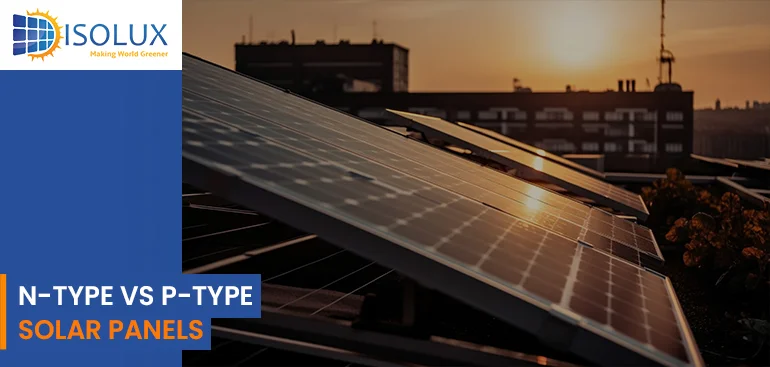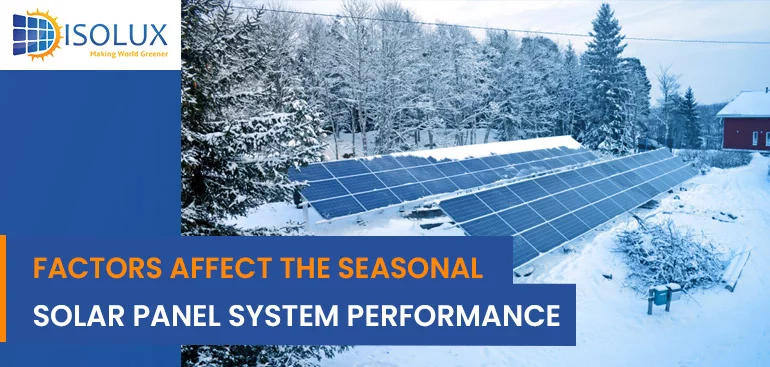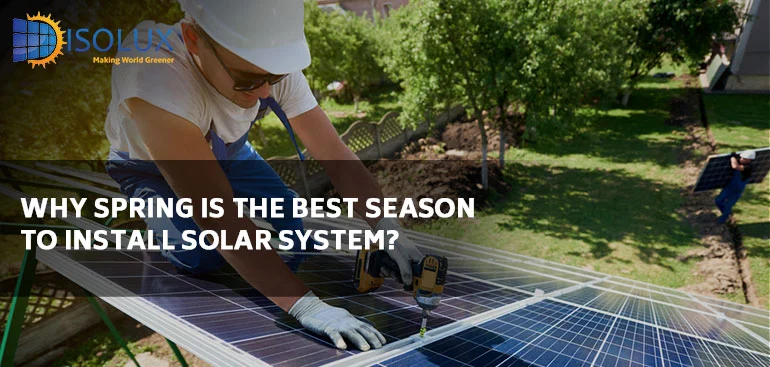The choice of solar panel plays an important role in determining its efficiency, durability, and performance. Two popular types of solar panels often mentioned are solar power units of N and P. Let’s explore what is N-type and P-type solar panels, how they work, and their advantages and disadvantages.
Working Of A Solar Cell
Before getting into the specifics of N-Type and P-Type solar panels, it is important to understand the basic functions of solar cells. Solar cells are the heart of solar panels and are responsible for converting sunlight into electricity.
They work based on the photoelectric effect, which produces electricity when materials are exposed to sunlight. Solar cells are generally made of semiconductor materials with properties that allow them to absorb photons and release electrons.
What are N-Type Solar Panels?
N-type solar panels, also known as N-type crystalline silicon solar panels. It gained attention due to its efficiency. These frames are made from a designed silicon wafer.
In N-type solar panels, group V elements of the periodic table, such as phosphorus, are incorporated into the silicon wafer. The addition of these elements creates an excess of electrons in the silicon structure, making it negatively charged. This negatively charged element is known as N-element. On the other side of the wafer, a positively charged P-layer due to the incorporation of Group III materials such as boron.
What are P-Type Solar Panels?
P-type solar panels, also known as P-type crystalline silicon solar panels. It is a more traditional and widely used option. While they are generally efficient, especially in optimal conditions. They can experience more significant efficiency losses in high-temperature environments or when shaded.
The border or intersection of these two lines is where magic happens. When sunlight strikes the N-type layer, it releases electrons into the P-type layer to generate electricity. This flow of electrons is what we capture P-type in N-type solar panels.
P-Type Vs. N-Type Solar Panels – Gauging the Market
Let’s compare them with P-Type counterparts and assess their standing in the market.
Efficiency and Performance
One of the standout features of N-type solar panels is their remarkable efficiency. They tend to perform well in low-light conditions and high temperatures. This makes them an ideal choice for areas with varying weather patterns. The N-type design minimizes electron recombination, resulting in higher energy yields.
Durability and Longevity
N-Type Solar Panels
N-Type panels are known for their durability and long lifespan. The materials used in their construction are less prone to degradation over time. By ensuring a stable and consistent energy output throughout their lifespan.
P-Type Solar Panels
P-Type panels offer good durability but may be more susceptible to degradation than N-Type solar panels. The advancements in materials and manufacturing techniques have improved longevity.
Cost Considerations
N-Type Solar Panels
The higher efficiency and durability of N-Type panels come at a cost. They are generally more expensive to manufacture and buy upfront. The long-term benefits of energy production and reduced maintenance costs can offset the initial investment.
P-Type Solar Panels:
P-type panels are often more cost-effective upfront expenses. It is a go-to choice for many residential and commercial installations due to its affordability.
Market Trends
In recent years, N-type solar panels have gained traction in the market. especially for large-scale solar projects and installations where performance and durability are paramount. Many leading solar panel manufacturers have started incorporating N-Type technology into their product lines.
P-Type panels dominate the residential market due to their affordability and proven track record. They remain a reliable choice for those looking to harness solar energy for their homes.
Why do P-type Cells Dominate in Solar Panel Production?
P-type solar cells have dominated solar panel production due to their lower manufacturing costs. Others like established technology, high-efficiency levels (ranging from 15% to 22% or more), proven durability, and scalability. These cells offer reliability and better temperature performance, making them suitable for various environmental conditions. Additionally, their market dominance has led to economies of scale and widespread adoption.
Conclusion
In the world of solar panels, the choice between N-Type and P-Type panels boils down to your specific requirements and budget. N-Type panels shine in efficiency and durability. By making them an excellent choice for big solar panel systems and projects where long-term performance is crucial. P-Type panels offer a more cost-effective solution for residential and smaller-scale applications.
You might be confused about whether to choose N-type or P-type solar panels. Contact Isolux Solar today to choose the right solar panels for your home solar panel system in Sydney.




